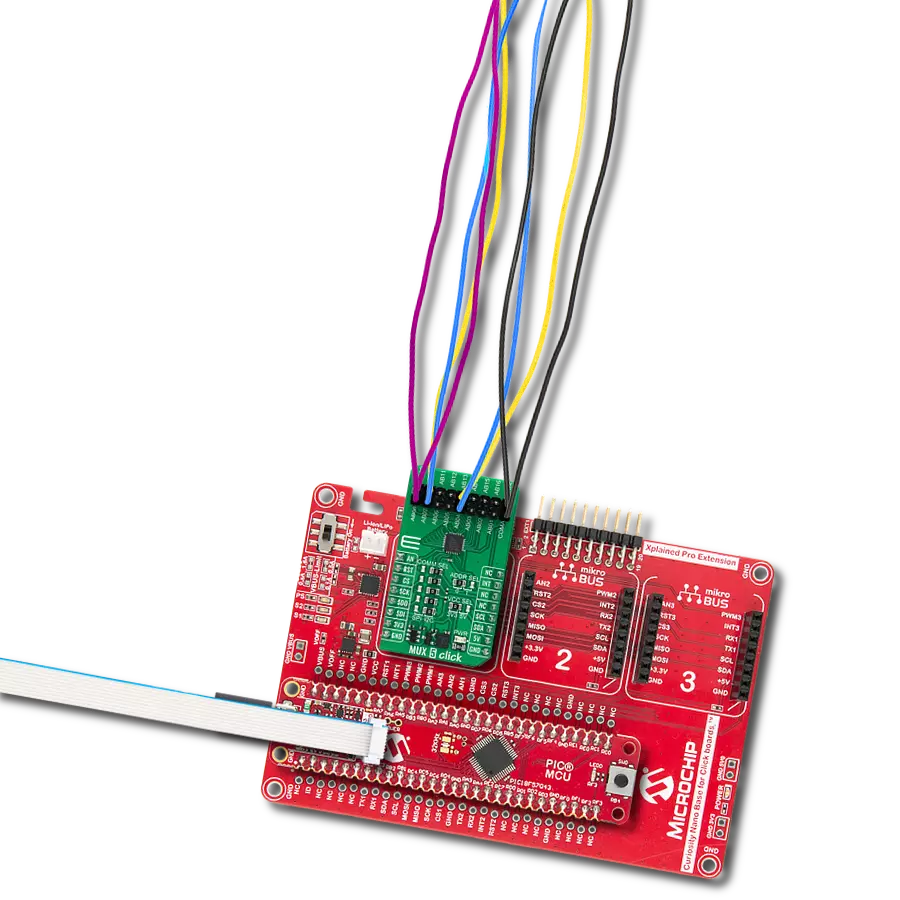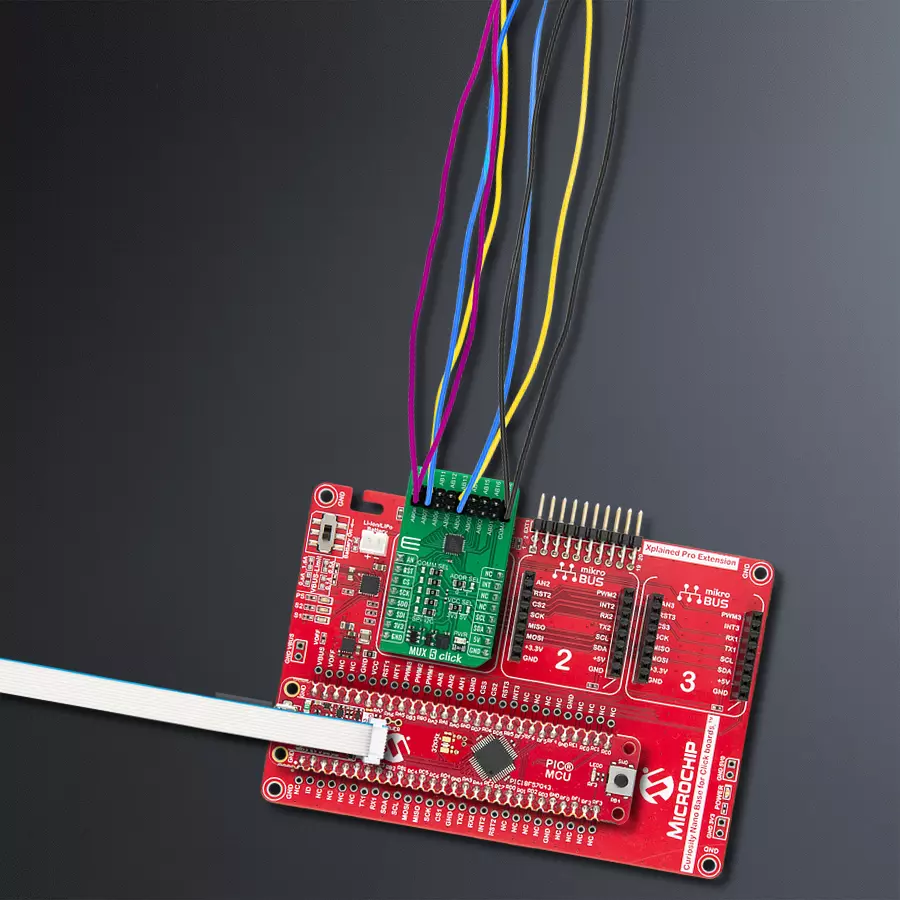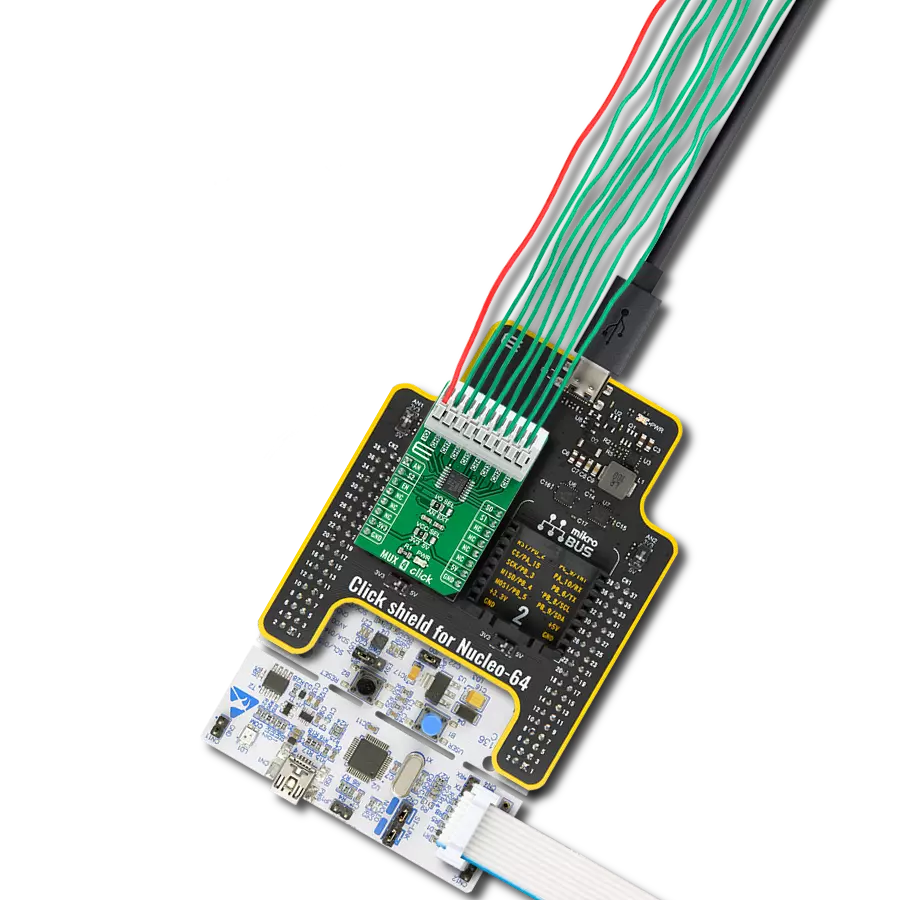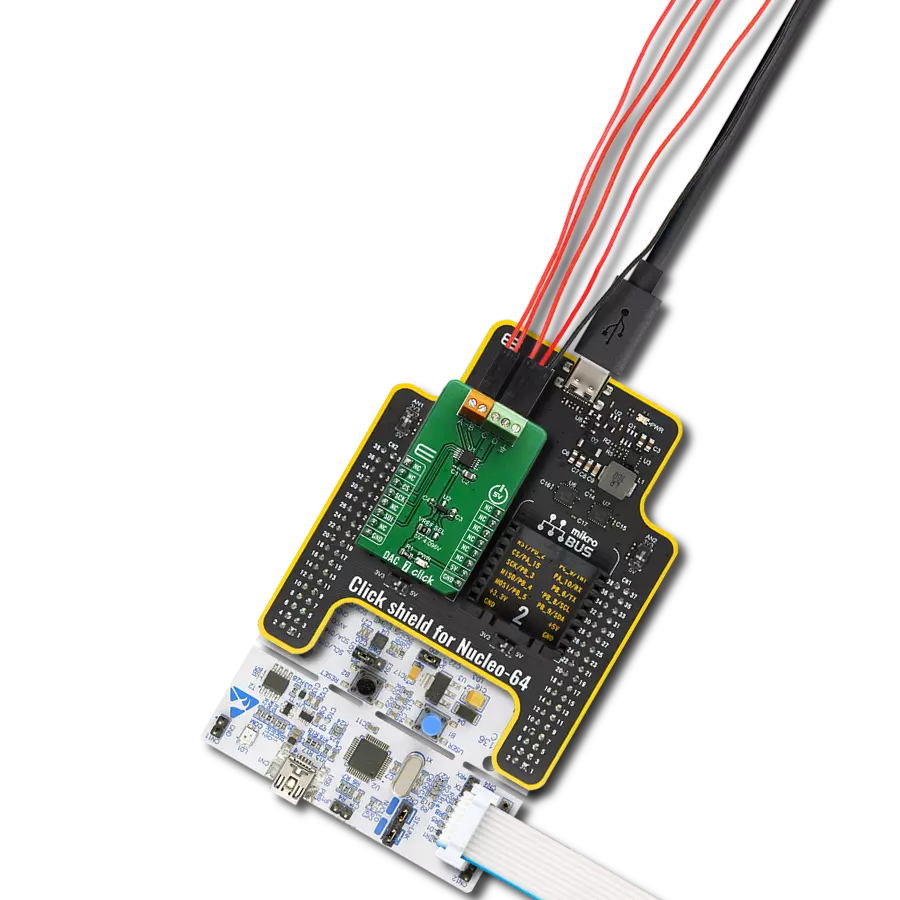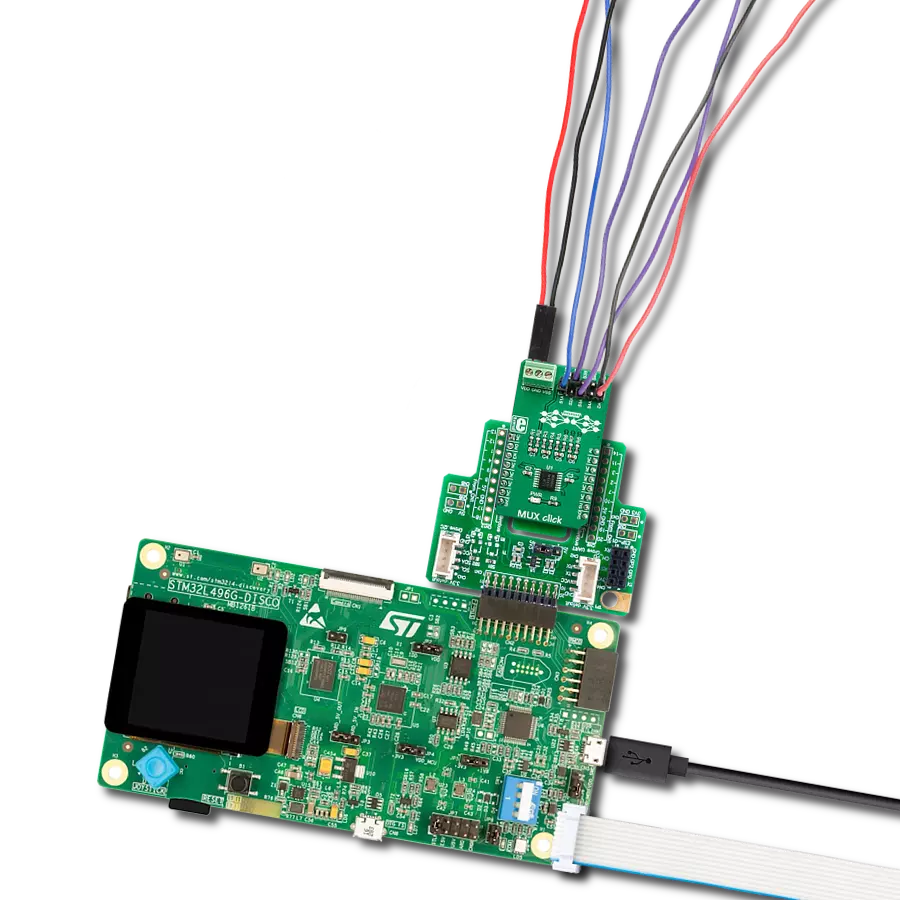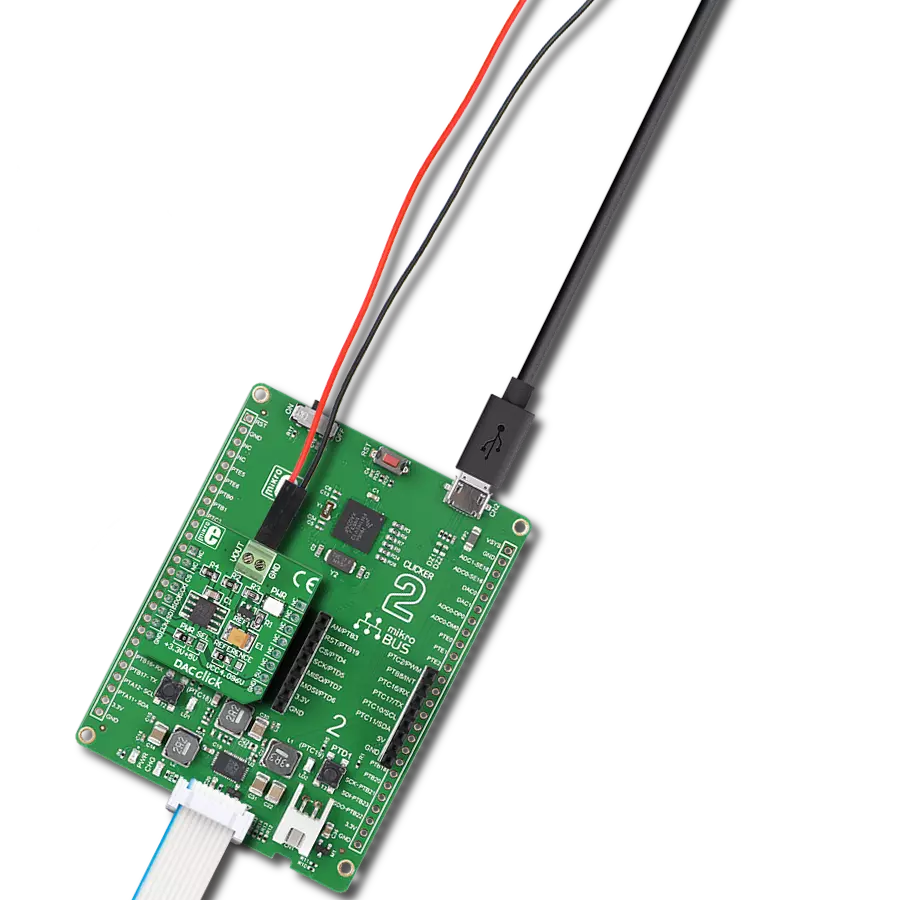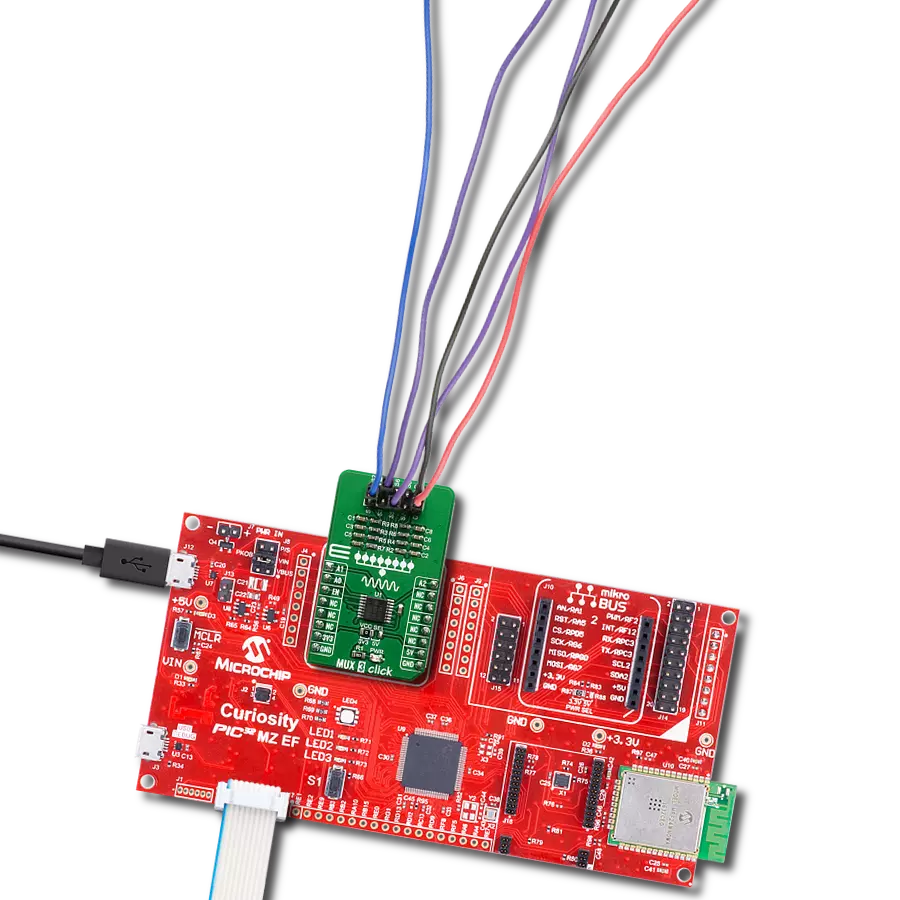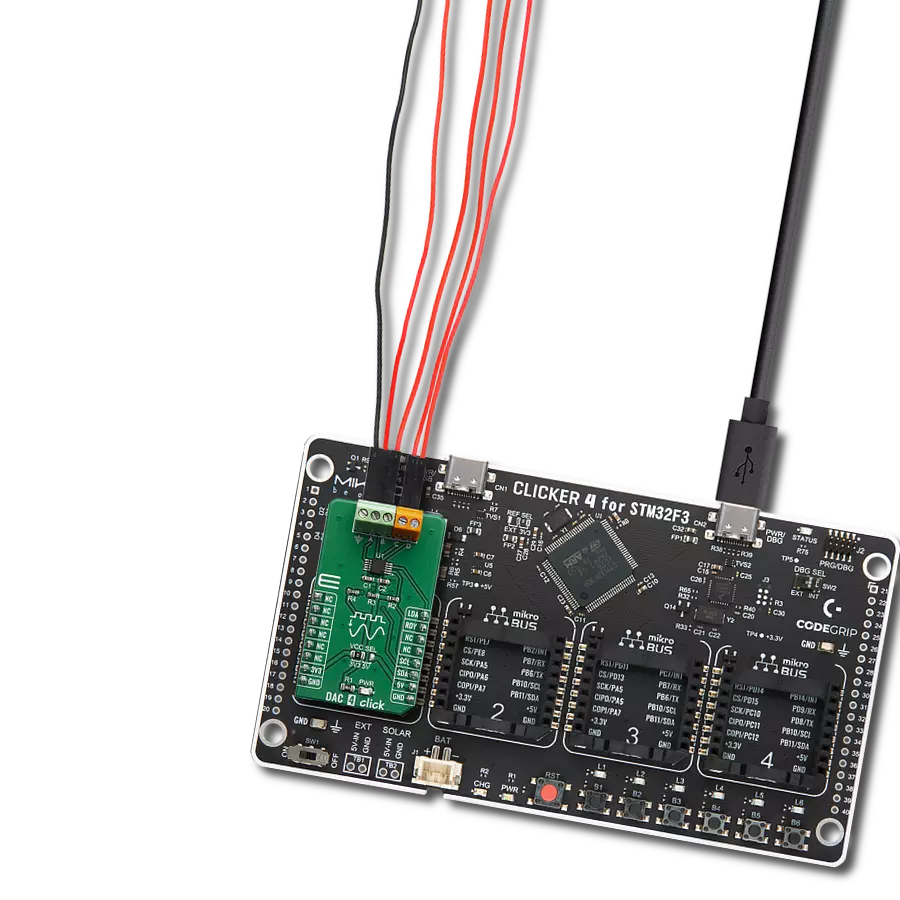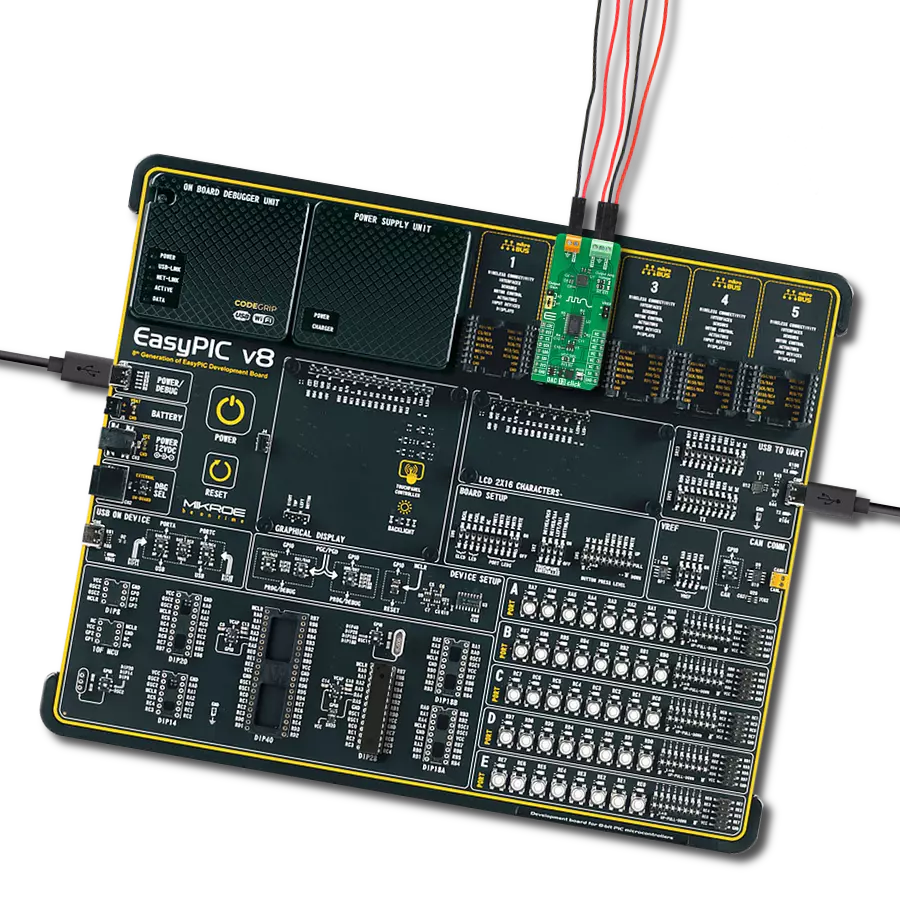Streamline the connection of multiple analog signals onto a single transmission path, enhancing efficiency and reducing complexity in data transmission
A
A
Hardware Overview
How does it work?
MUX 5 Click is based on the MAX14661, a serially controlled, dual-channel analog multiplexer from Analog Devices. It allows any 16 pins to be connected to any common pins, routed to the AN or INT pins of the mikroBUS™ socket, simultaneously in any combination. The MAX14661 features Beyond-the-Rails™ capability, which mainly simplifies an analog design by eliminating the need for multiple power rails and allows ±5.5V signals to be passed with any supply configuration. It integrates bias circuitry to switch high-voltage (±25V) signals while operating from a low-voltage supply with low on-resistance and fast bandwidth speeds. This Click board™ is ideal for
audio and data multiplexing, interface termination, switching, industrial measurement, and instrumentation systems. The MAX14661 allows for the use of both I2C and SPI interfaces. Both modes provide individual control of each independent switch so that any combination of switches can be applied. The selection can be made by positioning SMD jumpers labeled as COMM SEL in an appropriate position. Note that all the jumpers' positions must be on the same side, or the Click board™ may become unresponsive. While the I2C interface is selected, the MAX14661 allows choosing the least significant bit (LSB) of its I2C slave address using the SMD jumper labeled
ADDR SEL. This Click board™ also possesses an additional active-low shutdown pin, routed to the RST pin on the mikroBUS™ socket. When this pin is set to a low logic state, all registers are cleared, all switches are open, and the serial interface is not functional. This Click board™ can operate with either 3.3V or 5V logic voltage levels selected via the VCC SEL jumper. This way, both 3.3V and 5V capable MCUs can use the communication lines properly. Also, this Click board™ comes equipped with a library containing easy-to-use functions and an example code that can be used, as a reference, for further development.
Features overview
Development board
PIC18F57Q43 Curiosity Nano evaluation kit is a cutting-edge hardware platform designed to evaluate microcontrollers within the PIC18-Q43 family. Central to its design is the inclusion of the powerful PIC18F57Q43 microcontroller (MCU), offering advanced functionalities and robust performance. Key features of this evaluation kit include a yellow user LED and a responsive
mechanical user switch, providing seamless interaction and testing. The provision for a 32.768kHz crystal footprint ensures precision timing capabilities. With an onboard debugger boasting a green power and status LED, programming and debugging become intuitive and efficient. Further enhancing its utility is the Virtual serial port (CDC) and a debug GPIO channel (DGI
GPIO), offering extensive connectivity options. Powered via USB, this kit boasts an adjustable target voltage feature facilitated by the MIC5353 LDO regulator, ensuring stable operation with an output voltage ranging from 1.8V to 5.1V, with a maximum output current of 500mA, subject to ambient temperature and voltage constraints.
Microcontroller Overview
MCU Card / MCU
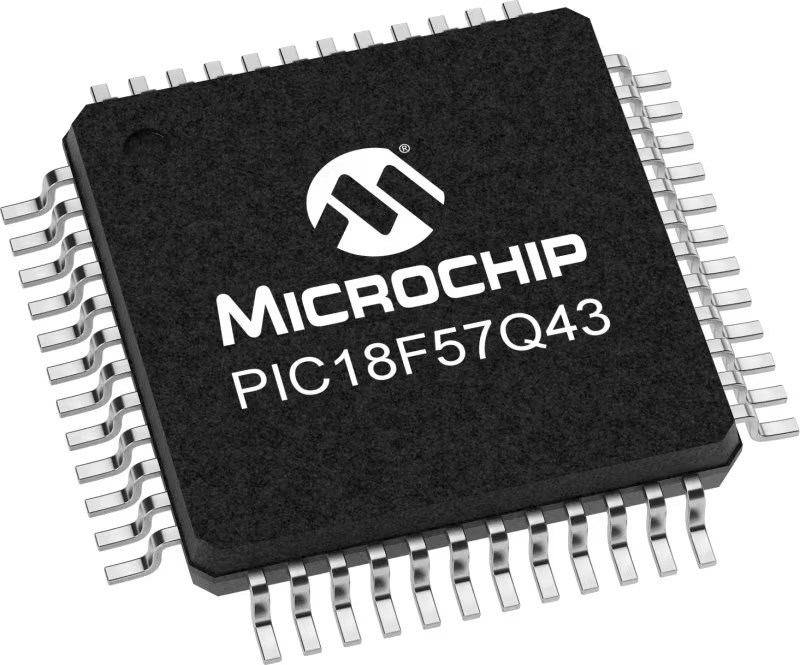
Architecture
PIC
MCU Memory (KB)
128
Silicon Vendor
Microchip
Pin count
48
RAM (Bytes)
8196
You complete me!
Accessories
Curiosity Nano Base for Click boards is a versatile hardware extension platform created to streamline the integration between Curiosity Nano kits and extension boards, tailored explicitly for the mikroBUS™-standardized Click boards and Xplained Pro extension boards. This innovative base board (shield) offers seamless connectivity and expansion possibilities, simplifying experimentation and development. Key features include USB power compatibility from the Curiosity Nano kit, alongside an alternative external power input option for enhanced flexibility. The onboard Li-Ion/LiPo charger and management circuit ensure smooth operation for battery-powered applications, simplifying usage and management. Moreover, the base incorporates a fixed 3.3V PSU dedicated to target and mikroBUS™ power rails, alongside a fixed 5.0V boost converter catering to 5V power rails of mikroBUS™ sockets, providing stable power delivery for various connected devices.
Used MCU Pins
mikroBUS™ mapper
Take a closer look
Click board™ Schematic

Step by step
Project assembly
Software Support
Library Description
This library contains API for MUX 5 Click driver.
Key functions:
mux5_i2c_write_register- This function writes a desired data to the selected register by using I2C serial interfacemux5_i2c_read_register- This function reads data from the selected register by using I2C serial interfacemux5_set_channels_state- This function sets a desired @b ch_state of the channels selected with @b ch_mask
Open Source
Code example
The complete application code and a ready-to-use project are available through the NECTO Studio Package Manager for direct installation in the NECTO Studio. The application code can also be found on the MIKROE GitHub account.
/*!
* @file main.c
* @brief MUX 5 Click example
*
* # Description
* This example demonstrates the use of MUX 5 Click board by mapping the common connection
* A and B to different channels every 5 seconds.
*
* The demo application is composed of two sections :
*
* ## Application Init
* Initializes the driver and performs the Click default configuration.
*
* ## Application Task
* Maps the common connection A and B to different channels every 5 seconds, and displays
* the channels state on the USB UART.
*
* @author Stefan Filipovic
*
*/
#include "board.h"
#include "log.h"
#include "mux5.h"
static mux5_t mux5;
static log_t logger;
void application_init ( void )
{
log_cfg_t log_cfg; /**< Logger config object. */
mux5_cfg_t mux5_cfg; /**< Click config object. */
/**
* Logger initialization.
* Default baud rate: 115200
* Default log level: LOG_LEVEL_DEBUG
* @note If USB_UART_RX and USB_UART_TX
* are defined as HAL_PIN_NC, you will
* need to define them manually for log to work.
* See @b LOG_MAP_USB_UART macro definition for detailed explanation.
*/
LOG_MAP_USB_UART( log_cfg );
log_init( &logger, &log_cfg );
log_info( &logger, " Application Init " );
// Click initialization.
mux5_cfg_setup( &mux5_cfg );
MUX5_MAP_MIKROBUS( mux5_cfg, MIKROBUS_1 );
if ( MUX5_OK != mux5_init( &mux5, &mux5_cfg ) )
{
log_error( &logger, " Communication init." );
for ( ; ; );
}
if ( MUX5_OK != mux5_default_cfg ( &mux5 ) )
{
log_error( &logger, " Default configuration." );
for ( ; ; );
}
log_info( &logger, " Application Task " );
}
void application_task ( void )
{
static uint8_t ch_num = 0;
if ( MUX5_OK == mux5_set_channels_state ( &mux5, MUX5_CHANNEL_ALL, MUX5_CHANNEL_STATE_HIGH_Z ) )
{
log_printf ( &logger, " All channels disconnected\r\n" );
}
Delay_ms ( 1000 );
if ( MUX5_OK == mux5_set_channels_state ( &mux5, MUX5_CHANNEL_1 << ch_num, MUX5_CHANNEL_STATE_COM_A ) )
{
log_printf ( &logger, " Channel %u connected to COM_A\r\n", ( uint16_t ) ( ch_num + 1 ) );
}
if ( MUX5_OK == mux5_set_channels_state ( &mux5, MUX5_CHANNEL_16 >> ch_num, MUX5_CHANNEL_STATE_COM_B ) )
{
log_printf ( &logger, " Channel %u connected to COM_B\r\n\n", ( uint16_t ) ( 16 - ch_num ) );
}
if ( ++ch_num >= 16 )
{
ch_num = 0;
}
Delay_ms ( 1000 );
Delay_ms ( 1000 );
Delay_ms ( 1000 );
Delay_ms ( 1000 );
}
int main ( void )
{
/* Do not remove this line or clock might not be set correctly. */
#ifdef PREINIT_SUPPORTED
preinit();
#endif
application_init( );
for ( ; ; )
{
application_task( );
}
return 0;
}
// ------------------------------------------------------------------------ END
Additional Support
Resources
Category:DAC
